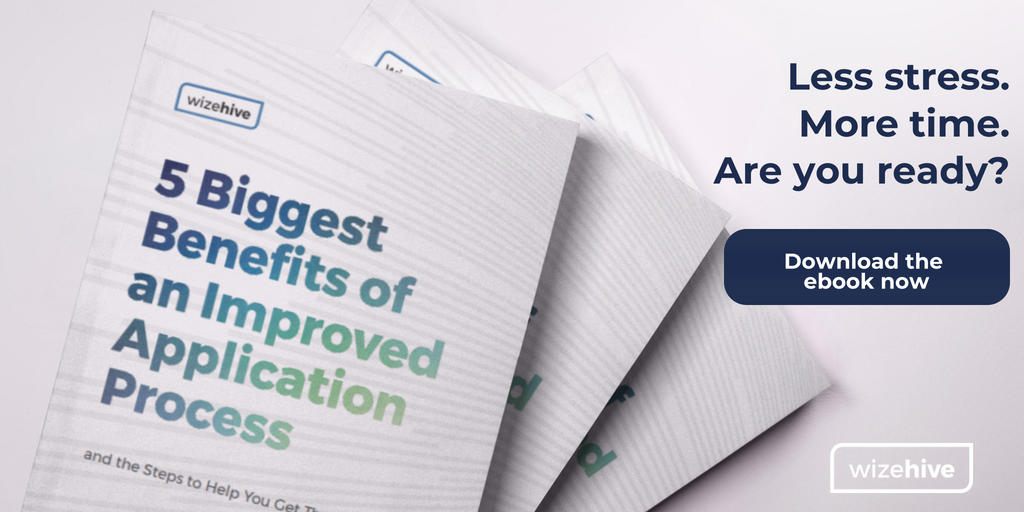By considering out-of-the-box questions or using different response formats, you may be able to better get to know your grant applicants, their goals, and the potential results if funded.
In a survey of more than 50,000, the Center for Effective Philanthropy discovered that the extent to which a grantee felt their funder understood their organization’s goals and strategies was the most powerful predictor of a strong relationship. But how can you really, truly get to know your potential grantees and their organizations? It may be time to shake up your grant application, incorporating new technologies or formats that prompt your applicants to share information about their potential grant in new ways. Not only could these changes lead to more insightful information, but they could help you select better candidates in the long run.
How can you get started?
Incorporate video
Organizations agree that most awards are based on the quality of the written application, which helps assess the commitment and ability of the grant to make an impact in the local community. However, this thinking might be nearsighted, especially for global applicants whose main written language might differ than that of your organization. International hurdles aside, organizations with superior writing skills often garner more attention, leaving other potential funders behind who might have a greater impact, but lack the skills to create a stellar written application.
Video is one solution to ensure you’re getting a good mix of potential applications, and can give a deeper dive into the potential impact of a grant. Incorporating video as part of your grant application could provide the opportunity for applicants to include interviews with community leaders, businesses, and government officials. In a video, those interviewed could provide comments on the project and its potential impact in the community. A great written application that lacks community support is a recipe for failure, so showcasing community impact up front--and in a video--is a great advantage for many applicants. Video also can make for a strong personal statement from the applicant. If the grant is funded, the video could serve as marketing content or PR to showcase the project. You could even host a library of funded video applications on your website to show how your organization makes an impact in the community and help future applicants better understand what you are looking for.
Opportunity for visuals
Providing an opportunity to include charts, timelines, maps, photos, or other visuals to help explain concepts that might be tough to understand through words alone can improve your grant application. When done right, visuals can help drive home an applicant’s point about a particular issue that needs funding -- and save you time understanding the grantee’s mission and vision. For example, a comparison chart of different state counties can help emphasize the need for opioid intervention in a particular county seeking grant funding for increased medication assisted treatment options for opioid withdrawal. This type of information in a comparison chart or infographic is usually more compelling rather than in a list of percentages on a page.
If applicants need help showcasing their cause even more, encourage them to include different types of graphics, such as bar graphs or pie charts. These can be especially helpful for communicating age ranges, income levels and other target population demographics in an application.
Maps are also a great visual tool to use since they tell the reader where a particular service will be targeted and how far the problem area truly spans -- you’ll be able to see right where your funding will go. But no matter the visual, encouraging applicants to use them helps break up text and makes the grant more interesting to read for all reviewers. As a grant manager, you’re most likely reading stacks of proposals and grants every day. And no one likes reading giant blocks of text. Visuals ensure that the points your applicants are trying to convey won’t be lost.
Use storytelling
For grant managers who want to learn more about their applicants, making storytelling a part of the application is essential. When applicants turn hard data into a story, they personalize their application and make it more relevant. And it doesn’t have to be long-form stories, either. Telling a story in just a few words can highlight an applicant’s goal. To encourage storytelling as part of your application, consider including questions like:
- “How can you show that you are playing an important role in a community of particular concern?”
- “How will your community benefit from the experience?”
- “What do those benefits mean to you?”
- “What is going on in your community that has inspired your project?”
Many online applications have character limits, so consider expanding yours or removing other elements to make room for storytelling if it’s a priority of yours. This will bring the application to life and help you get to know your potential grantees in a more meaningful way.
